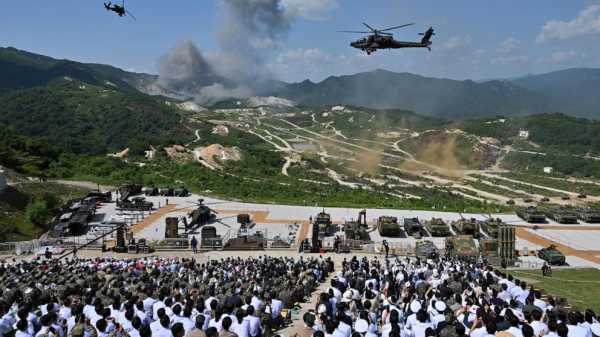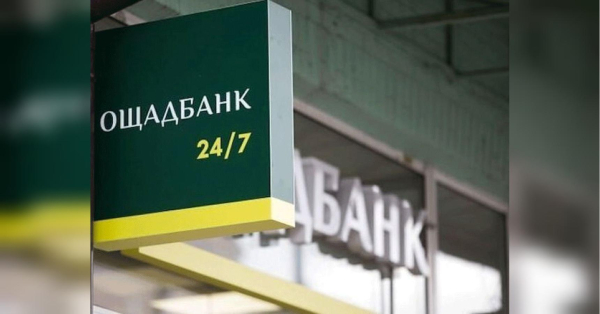
SEOUL, South Korea — North Korea launched two short-range ballistic missiles toward its eastern waters on Thursday, its neighbors said, in a resumption of weapons tests to protest just-ended South Korean-U.S. live-fire drills that it viewed as an invasion rehearsal.
The launches are the first by North Korea since it failed to put its first spy satellite into orbit in late May.
South Korea’s Joint Chiefs of Staff said the missiles were launched from North Korea's capital region and traveled about 780 kilometers (480 miles) before landing in waters between the Korean Peninsula and Japan. It called the launches “a grave provocation” and said South Korea's military will maintain a firm readiness in close coordination with the United States.
Japanese Prime Minister Fumio Kishida said the missiles landed inside Japan's exclusive economic zone. He called the launches a "violent action” that threatened international peace and safety.
The chief nuclear envoys from South Korea, Japan and the U.S. held a three-way telephone call and agreed to continue efforts to get North Korea to halt weapons activities and return to talks, according to Seoul's Foreign Ministry.
The launches came hours after South Korean and U.S. troops ended a fifth round of large-scale live-fire drills near the Koreas’ heavily fortified border earlier Thursday. About 30 minutes before the launches, North Korea’s military vowed an unspecified response to the drills, which it called “provocative and irresponsible.”
“Our response to (the South Korean-U.S. drills) is inevitable,” an unidentified spokesperson of the North Korean Defense Ministry said in a statement carried by state media. “Our armed forces will fully counter any form of demonstrative moves and provocation of the enemies.”
Tensions have risen in past months as the pace of both North Korean weapons tests and U.S.-South Korea military exercises has increased in tit-for-tat actions. North Korea has test-fired about 100 missiles since the start of 2022. Experts say North Korea may be using the U.S.-South Korean exercises as a pretext to conduct test launches to develop more powerful missiles and increase its leverage in future diplomacy.
On May 31, a North Korean long-range rocket carrying its first spy satellite crashed off the Korean Peninsula’s west coast. North Korea admitted the failure and vowed to push for a second launch. A spy satellite is among a slew of high-tech weapons that leader Kim Jong Un wants to develop to cope with what he calls U.S. hostility.
“This launch is not to make up for the recent failure, because North Korea will almost certainly make another attempt later to put a spy satellite into orbit,” said Leif-Eric Easley, a professor at Ewha University in Seoul. “The message of today’s missiles is more likely Pyongyang’s protest against South Korea’s combined defense exercises with the United States, as well as a demonstration of North Korea’s own military capabilities and readiness.”
Thursday’s South Korean-U.S. exercises were the fifth and last round of live-fire drills that began last month. This year’s drills were the biggest of their kind since they started in 1977. Each of the five rounds involved 2,500 South Korean and U.S. troops and about 610 military assets including stealth fighter jets, attack helicopters, tanks and drones from both countries, according to the South Korean Defense Ministry.
South Korean President Yoon Suk Yeol and other senior South Korean and U.S. military officials observed Thursday’s drills.
“Only a strong military — which can fight and defeat the enemy and which the enemy can’t even dare to challenge — can guarantee the freedom, peace and prosperity of the Republic of Korea,” Yoon said at the training site, using South Korea’s official name.
North Korea’s state media have accused South Korea and the U.S. of using the firing drills to master “military threat and blackmail and war tactics” against North Korea.
On Thursday, top security officials from the United States, South Korea and Japan met in Tokyo for talks on North Korea and other issues. During the meeting, U.S. National Security Adviser Jake Sullivan reiterated Washington’s commitment to the defense of South Korea and Japan, the White House said in a statement.
North Korea was slapped with international economic sanctions over its past nuclear and ballistic missile tests, which are banned by U.N. Security Council resolutions. But it has avoided new U.N. sanctions over its recent series of missile tests because China and Russia, embroiled in separate confrontations with the U.S., blocked attempts by the U.S. and others to toughen the sanctions.
Whether North Korea has functioning nuclear missiles is a source of outside debate. The last time it tested a major nuclear-capable ballistic weapon was April 13, when it launched what it described as a newly developed intercontinental ballistic missile powered by solid propellants. Such missiles are easier to move and fire quickly than ones with liquid propellants, making them harder to detect and intercept.
___
Associated Press writer Mari Yamaguchi in Tokyo contributed to this report.
Sourse: abcnews.go.com






